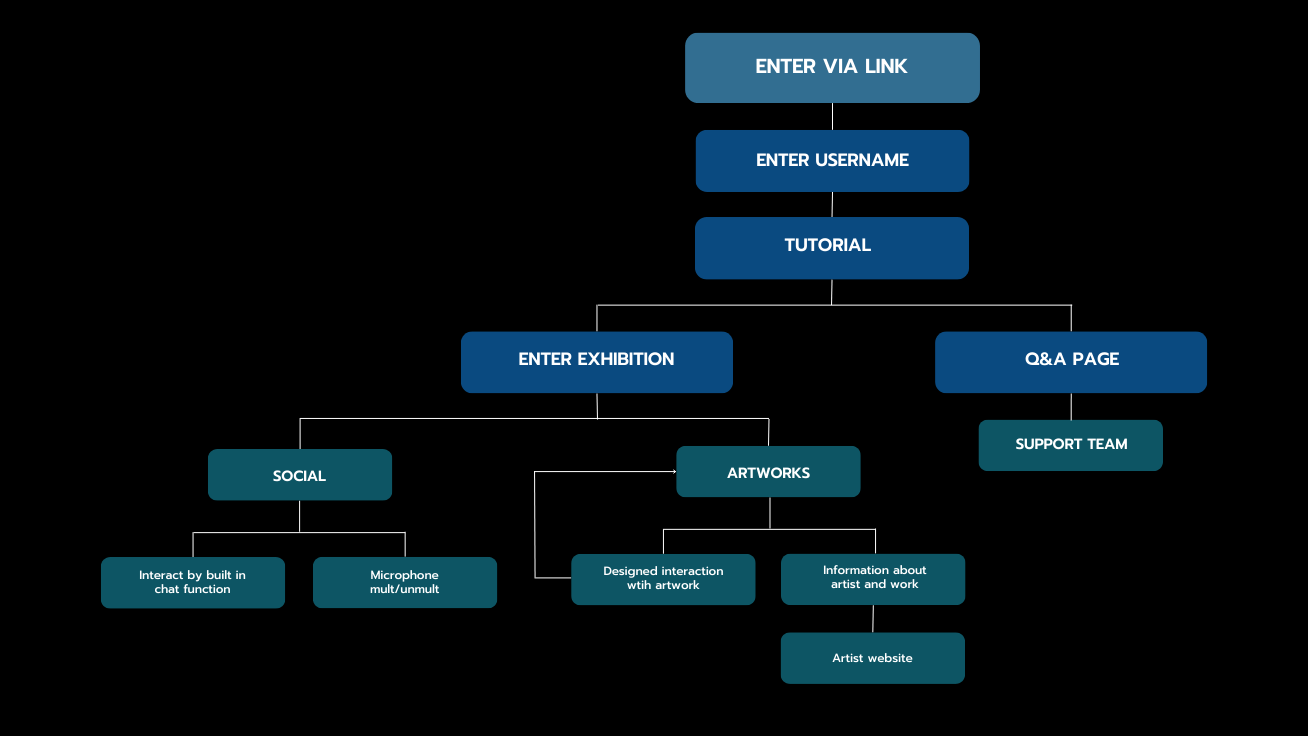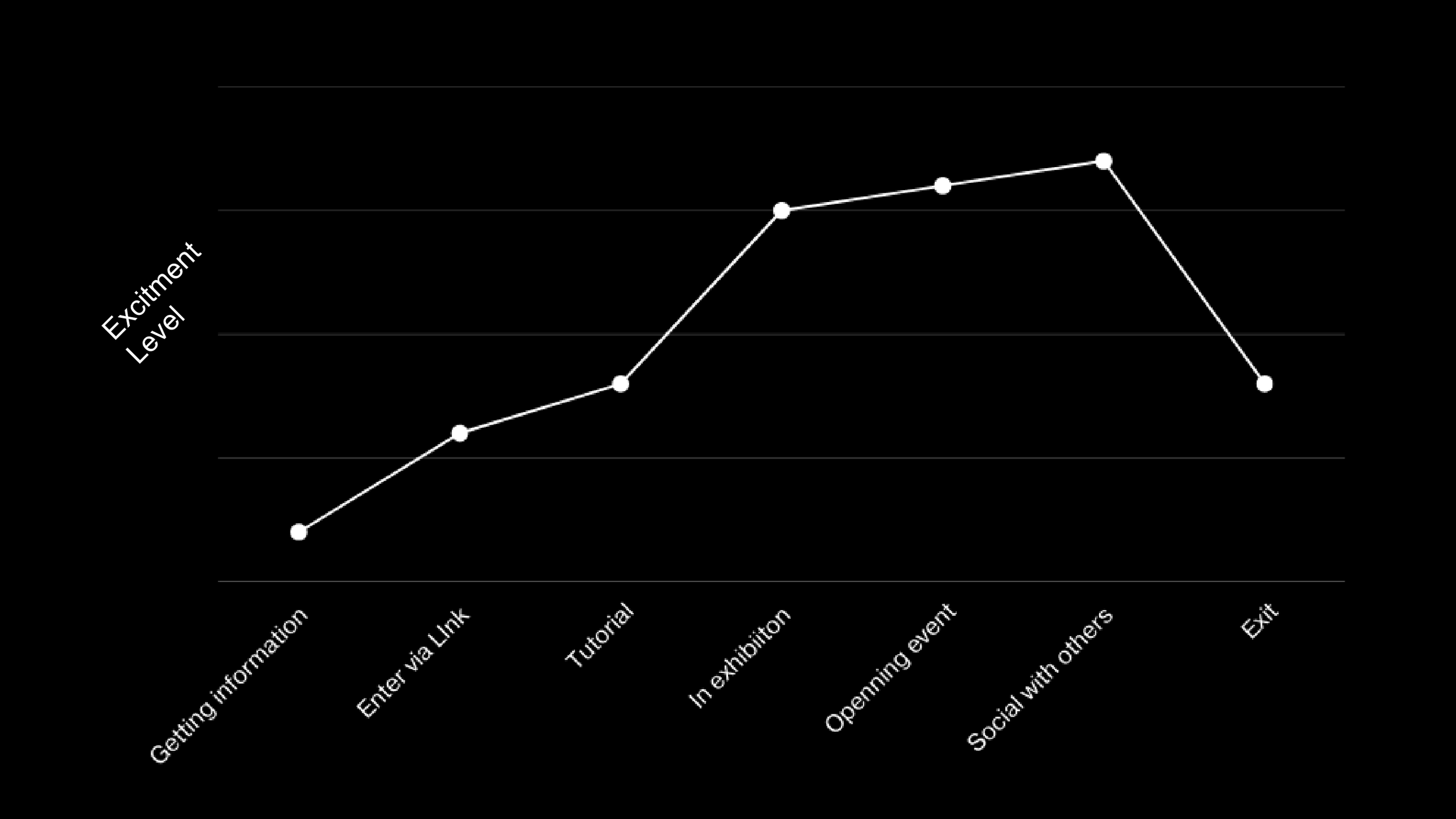
MAIA Digital
An immersive 3D platform for Exhibition and Event.
Role: Market research, Marketing and business structure planning.
The Problem
With the Covid lockdown, all exhibitions are forced to be cancelled or moved online, opening nights are mostly cancelled with some hosting it on Zoom. Most online exhibitions are 2D website-based, which forces artists to take pictures of their work. This had a strong impact on how the audience perceived the work, especially for artists working in 3D (sculpture, installation, etc.). Opening night serves the function of socialising, especially for new artists to get to know other artists, curators, and collectors/buyers. With it cancelled or hosting Zoom this function has been heavily disrupted.
The Solution
A 3D space with easy access from most common platforms (phone, laptop, VR), allows the audience to view works with a 1:1 scale, allowing 3D artists to displace their work as intended. And hosting events like opening night within the space, recreating the natural social environment. Allow small group conversation without losing contact with the environment.
The Revenue
To cover the cost of running such an event-based platform, we will be charging commissions for artwork sales, possibly from sponsorship and or hosting third-party events.
Market research
Based on our research, we found that most galleries spend over 40% budget for an exhibition on insurance and transportation costs. Shipping of artworks also would affect turnaround time and gallery efficiency. Although we would have an extra cost of scanning the artwork/travelling, we save much on insurance and transportation. Also, a shorter turnaround time helps us create more opportunities for artists to exhibit.
Market & traffic
At the time (November 2020) most platforms like ours had a massive increase in traffic and an increasing number of new platforms.
The majority of the visitors are around age 25-34 which takes about 33% of viewers, 15.7% are around 18-24, and 18.7% are people from 35-44. The two biggest websites have around the same number for both genders visitors, with slightly more male visitors around 52%. Kunstmatrix.com is the only company in this field that uses paid ads. And a lot of users are referring to their website.
Style & Design
Future research on these platforms shows that they are aiming to replicate physical galleries, with similar looks (white walls & wood flooring) and functions (artwork details, artists details, some of them have price information).
Market Research
Based on our research, we found that most galleries spend over 40% budget for an exhibition on insurance and transportation costs. Shipping of artworks also would affect turnaround time and gallery efficiency. Although we would have an extra cost of scanning the artwork/travelling, we save much on insurance and transportation. Also, a shorter turnaround time helps us create more opportunities for artists to exhibit.
Market & Traffic
At the time (November 2020) most platforms like ours had a massive increase in traffic and an increasing number of new platforms. The majority of the visitors are around age 25-34 which takes about 33% of viewers, 15.7% are around 18-24, and 18.7% are people from 35-44. The two biggest websites have around the same number for both genders visitors, with slightly more male visitors around 52%. Kunstmatrix.com is the only company in this field that uses paid ads. And a lot of users are referring to their website.
Style & Design
Future research on these platforms shows that they are aiming to replicate physical galleries, with similar looks (white walls & wood flooring) and functions (artwork details, artists details, some of them have price information).
User research - Artists
Motivation
Continue hosting exhibitions during lockdown, getting feedback, and artwork sales.
Staying in contact with other artists, curators and collectors.
Seeing other's exhibitions, getting inspiration.
Behaviours
Most people rely on Social Media to access other's works and show their works.
WhatsApp group or Zoom meeting with friends for feedback.
Needs
Exhibition space to show their work to the public and fellow artists, possibly get feedback.
Getting to know new people, building connections.
User research - Audience
Motivation
Enjoy being in the art environment
Getting inspiration
Connect with people
Going to artist's talk
Behaviours
Galleries website
Some openings via Zoom
Needs
Space with high-quality artworks
An online virtual gallery
Business model
After researching and breakdown the business model of similar platforms, I found most of them are using a built yourself solution in which artists can buy digital spaces used for exhibition or showroom purposes. Almost all of them lack a real-time communication system. Therefore to maximise our advantage we decided to be event-based.
User experience
User Flow Map
User Journey Map
Designed test – Insite
The In-site exhibition not only is our first exhibition but also contains many of our questions.
Reaction & Possibility
Testing the possibility is defiantly needed after we decided to take the event-based approach to our platform compared to the renting space approach our competitors have taken. The result shows that the cost per person was very low and in the case of one person buying the work will cover almost all the cost of this exhibition.
Style and UX
We believe that digital spaces should not be replicas of the physical world, therefor we told the artists to focus on demonstrating their work and not getting limited by the space. Turns out people enjoyed going through the work and even being a part of it. However, we find that one of the extremely large spaces was resulting difficulty in communication.
Problems
Result of the non-floor design, we found some audiences were facing difficulty in navigation, mainly on vertical movements. Also, a traffic overload of servers happened during our event resulting in loss of connection for some users.








